Samsung Galaxy Nexus & Ice Cream Sandwich Review
by Brian Klug & Anand Lal Shimpi on January 18, 2012 1:34 PM ESTWiFi
The Galaxy Nexus uses Broadcom’s BCM4330, which is starting to pick up steam and become just as ubiquitous as the BCM4329 it replaced. The Galaxy Nexus’ BCM4330 includes both 2.4 and 5 GHz WLAN connectivity, just like the SGS2 in fact. What’s particularly notable is that Android 4.0.x now includes the proper prioritization for each WiFi band, and also includes the ability to set preference for one band for the other. By default, when faced with the same SSID on both 2.4 and 5 GHz, the Galaxy Nexus correctly chooses the 5 GHz AP if the signal is favorable, then falls over to 2.4 GHz when its link quality on that band would be better. Other than this notable change, the remainder of the WiFi settings panes are unchanged. The WiFi sleep preferences and the main scan and connect page does get a minor facelift and change, however.
The Galaxy Nexus latched onto my 802.11n APs on both 2.4 and 5 GHz and used 20 MHz long guard interval rates at 65 Mbps the same as other BCM4330 based devices. Throughput is unsurprisingly very good on the Galaxy Nexus in our WiFi test, which consists of downloading a 100 MB PDF hosted locally over WiFi. Of course, since we can now control and choose which band the device uses, I tested on both 2.4 GHz and 5 GHz, both with a negotiated link rate of 65 Mbps.

WiFi range on the Galaxy Nexus is good as well, I can make it to the same place before hopping off my network as other devices. I have gotten a few emails and read reports about power-save mode incompatibility with some APs that causes it to drop off when on standby mode. Since we've seen BCM4330 work just fine on other devices, I have no doubt this is a software issue which will be fixed soon.
Speakerphone
As usual I also measured speakerphone volume on both variants of the Galaxy Nexus using a sound datalogger. There is apparently a difference between the two models, possibly from different acoustical chambers in the vibration unit and antenna. Also there’s possibly still a difference as a result of the different voice coders in use, and the different dynamic range.
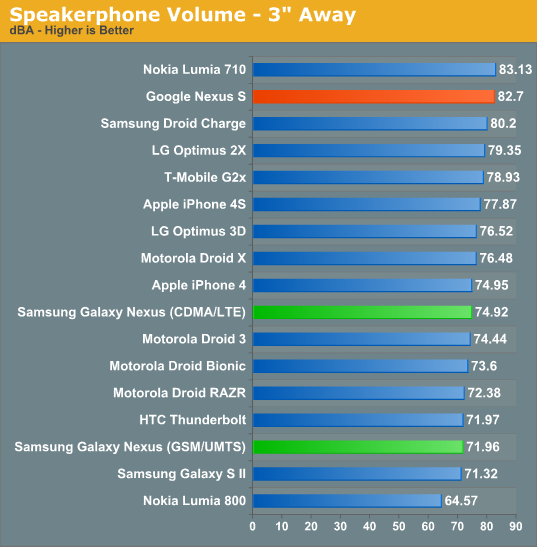
Either way, the two test differently, and subjectively my experience backs those measurements up. I found the GSM/UMTS Galaxy Nexus a bit too quiet while using Google Navigation, and the CDMA/LTE Galaxy Nexus on the quieter side but totally useable for Navigation.
GPS
Just like the SGS2, the Galaxy Nexus uses a SiRFStarIV GSD4t for GPS. Subjectively the Galaxy Nexus GPS doesn’t lock quite as fast as some of the other GNSS solutions that are integrated into the cellular basebands in phones, but it does get the job done pretty fast. I see a time to first fix of between 4-7 seconds depending on visible sky swath presented to the handset.
I did receive a few emails from readers with reports of some Galaxy Nexuses shipping with GPS issues or taking too long to lock. One of my friends with a CDMA/LTE Galaxy Nexus also reported that he couldn’t get a GPS lock at all for Google Navigation. I’m not entirely sure what the deal is here since I never was able to encounter this behavior, although manually downloading the A-GPS data (ephemeris) using a tool like GPS Status seems to in general helps mitigate those problems when they do happen. This just manually re-downloads the xtra.bin file from http://xtra1.gpsonextra.net/xtra.bin as configured in gps.conf. I have to admit that I didn’t encounter any GPS issues in my time with the Google Nexus (CDMA/LTE or GSM/UMTS version) so far.
Audio
We’re going to do a more in-depth audio analysis with the Galaxy Nexus when we have our testing suite more fleshed out, and possibly bring you Francois Simond’s thoughts once more. For now however, we have some RMAA runs I talked about a while ago in another review, and my own impressions with Galaxy Nexus sound after using the device for a while now as my primary music player with some Shure SE535s.
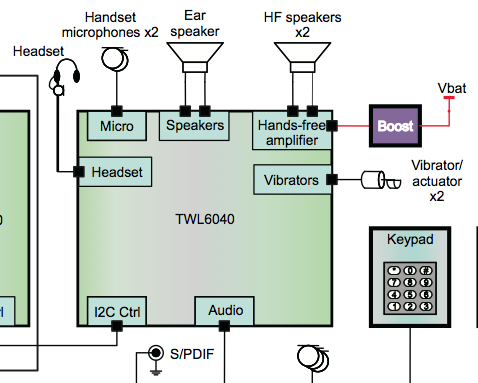
First off, the Galaxy Nexus out of the box is pretty decent subjectively. The Galaxy Nexus uses TI’s TWL6040 low power audio codec for its DAC and other audio responsibilities, alongside the vibrator actuator. We’ve seen some other TI audio codecs (like AIC3254 in the HTC Sensation) but this our first time seeing TWL6040. Almost immediately I noticed that there isn’t any constant high frequency whine present like I’ve heard on so many phones lately (Bionic, SGS2, others), and it’s hard to hear any noise when the DAC turns on and off after music stops playing. Even plugged into USB power, the device also doesn’t pick up any more noise or change at all. There’s also almost no CPU noise, though if you listen very carefully you can indeed hear some state changes, but it’s very minimal and very difficult to pick out.
Though the frequency response isn’t entirely flat as shown, the Galaxy Nexus doesn’t sound bad subjectively. Our testing here is just a RMAA run from line out on the devices to line in on an ASUS Xonar Xense sound card. In addition, testing is done at 44100/16 bit on the devices - Android will downsample anything more than this.

From 20 Hz to 20 kHz: +0.10, -0.62 (dB)
Noise on the Galaxy Nexus also isn’t bad, definitely better than the RAZR we tested earlier.

Noise Level: -96.2 (dB, A weight)
Dynamic range shows the difference in level between the maximum output and minimum output on the smartphone. This is limited by voltage swing and system noise. Galaxy Nexus again here looks pretty good, minus a few spikes.

Dynamic range: 96.0 (dB, A weight)
The two total harmonic distortion charts are next, which are the summation of integer multiples of the test frequency and expressed as a ratio of the input signal (in this case at 1 kHz). THD+Noise gives all frequencies except the input signal. The Galaxy Nexus is pretty good here, but still has some spikes at a few noteworthy integer multiples, plus some odd spikes at high frequencies.
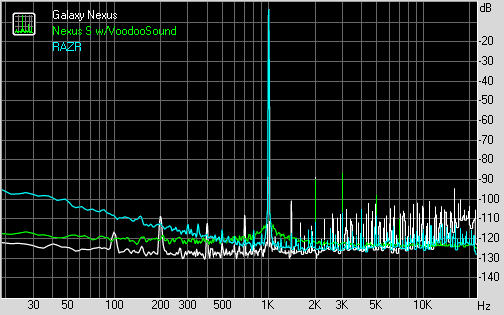
THD %: 0.0088
Intermodulation distortion is similar to total harmonic distortion, however it applies two input signals and then measures the signal at all frequencies except the two inputs. In this case, the two signals are on opposite sides of the spectrum. Galaxy Nexus ends up not looking too bad here although there are disconcerting spikes above 1 kHz that I can’t explain.
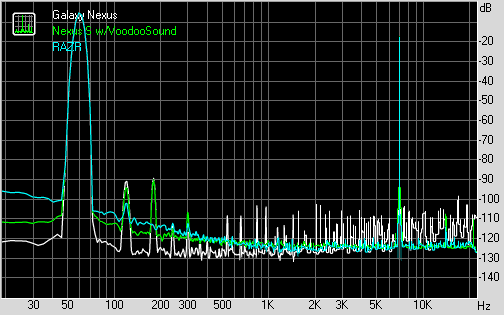
IMD + Noise %: 0.013
Finally stereo crosstalk is pretty flat on the Galaxy Nexus.

Stereo Crosstalk: -87.4 dB
Again, this isn’t meant to be a totally comprehensive analysis of the Galaxy Nexus’ sound characteristics, just some educated impressions. Subjectively the Galaxy Nexus sounds nice and clean, and is absent of the annoyingly audible background noise and whine that’s present on some of the other noteworthy phones we’ve tried as of late. Francois (supercurio) has expressed a few times that the Galaxy Nexus has good audio potential, and that alone should tell you something.


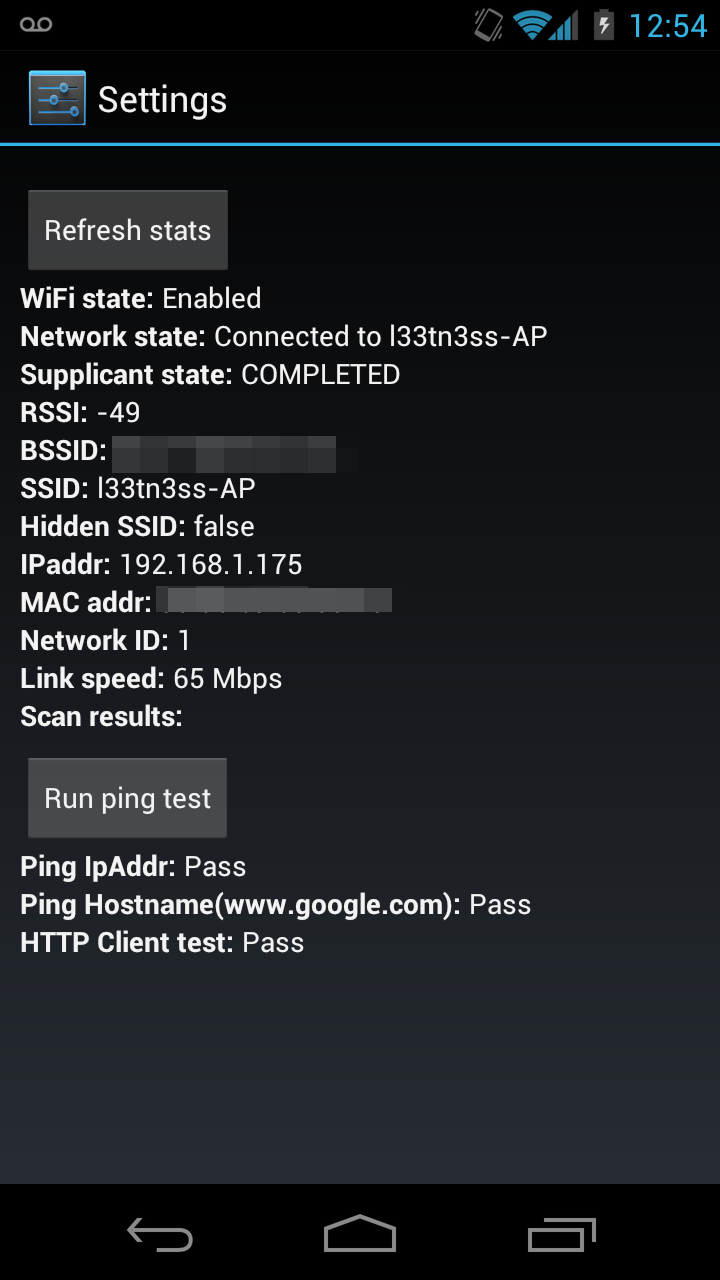
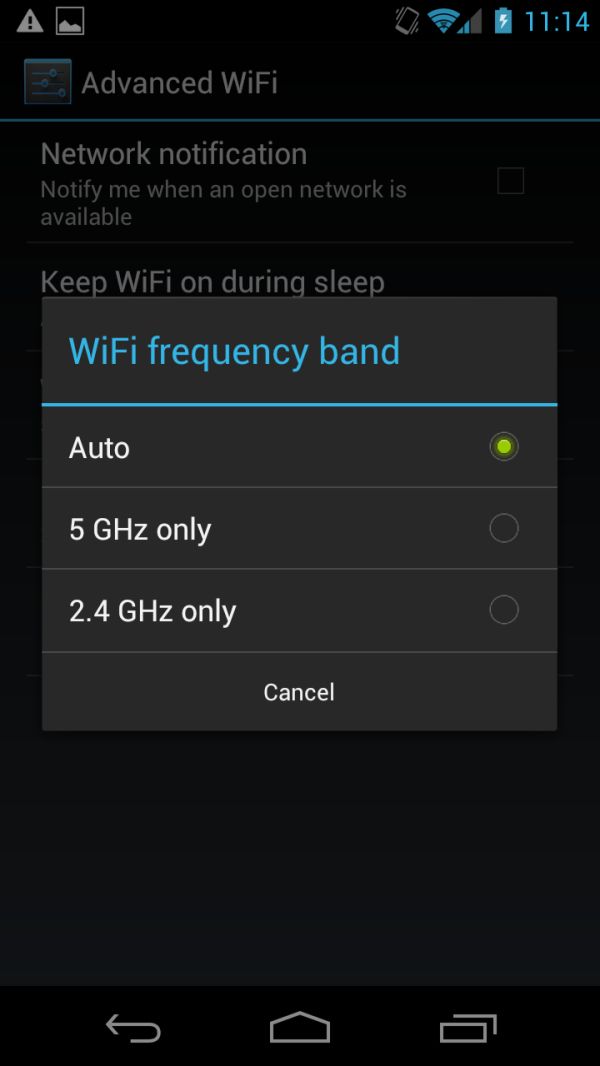
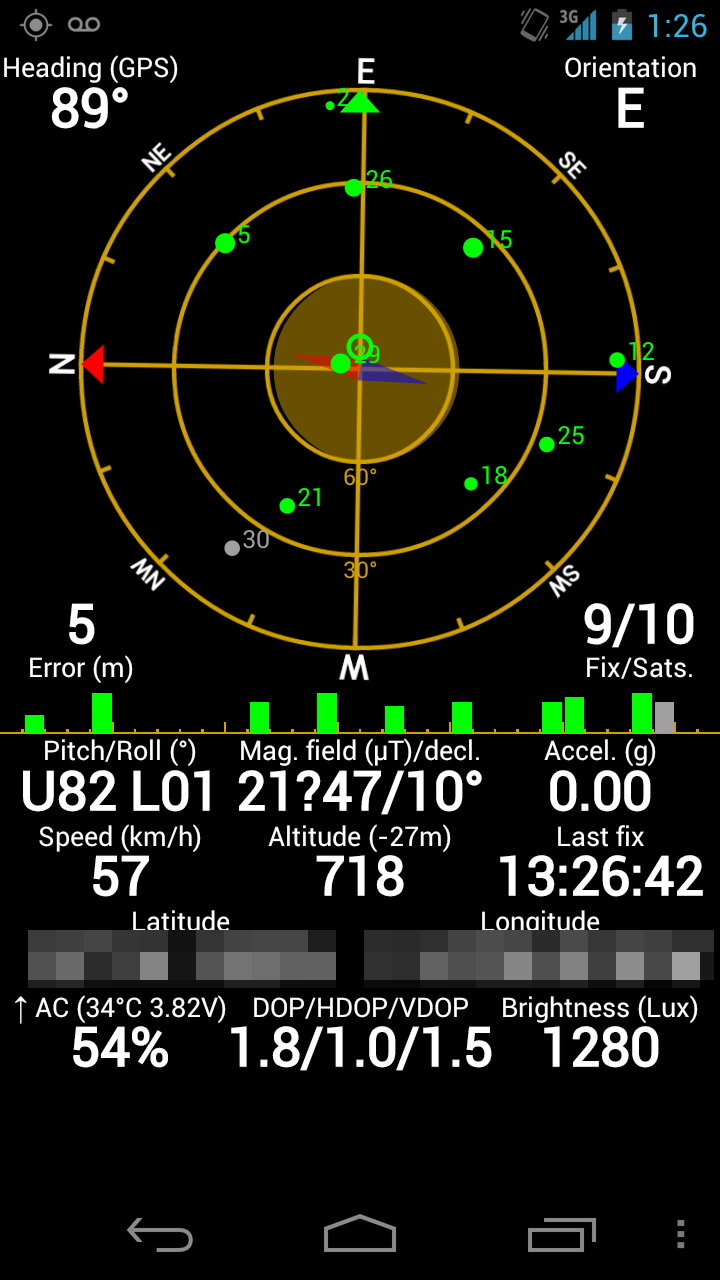








185 Comments
View All Comments
JohnJackson - Wednesday, February 8, 2012 - link
You mean the one where the devices were running the benchmarks at the respective device's NATIVE resolution? 960x640 has 60% more pixels than 800x480...http://www.anandtech.com/show/4064/glbenchmark-20-...
Subzero0000 - Thursday, January 19, 2012 - link
Where do you get "lag" in iPad 2?I use it everyday and the only lag I found is when I slide to the spotlight screen, or browsing webpage (while rendering).
sonelone - Thursday, January 19, 2012 - link
Seriously, where do you get lag on the iPad or iPhone? With the SGX543MP2 rendering nothing but a grid of icons, getting lag would be ridiculous.augustofretes - Thursday, January 19, 2012 - link
Pseudo power users, judging mobile operating systems based on their home screens since 2007.audioman83 - Thursday, January 19, 2012 - link
LOL agreed. So sad.Owls - Thursday, January 19, 2012 - link
blah blah blah I don't like my iphone/ipad being compared so let me make fun of that person for being objective.I know the gnex is not perfect but guess what, neither is your apple product. We all live with compromises and this is no different. However, I refused to be ripped off by apple AND be forced to use itunes.
sorry mr apple user.
Subzero0000 - Friday, January 20, 2012 - link
Firstly, I think you are over-reacting (so did augustofretes).See, I wouldn't complain if someone finds a few lag on Android, because I appreciate the fact that Android is running true-multitasking, with all the widgets and background tasks give us the flexibility that iOS can never dream of.
But then, you cloud your judgment with hatred...
For example, I use Windows 7 at home, Android for phone, iPad for everything else (reading, browsing, gaming, etc...).
I use Google account to sync calendar+contact between Android and iPad.
I buy books in Amazon, and read them through Kindle app on iPad.
I upload my own mp3 to iPad through iTunes, no problem.
Mobile games are better quality on iOS (the truth), so I am happy to buy in AppStore.
There is nothing forcing you to use iTunes.
and "ripped off"? I actually think iPad is cheap, as a outstanding CONSUMER product.
So, calm down, it's just a product. And have a nice day :)
medi01 - Friday, January 20, 2012 - link
Yeah, nothing is "forcing" you to use iTunes apart from the fact that many Apple's products won't even switch on for the first time without itunes.Subzero0000 - Friday, January 20, 2012 - link
Well, what is the matter with one-time activate with iTune?If you find that annoying, then how about the procedure to root/flash your Android, or jb your iOS.
How on earth would a tech-savvy find it annoying/difficult for such a easy task (iTune) ???
I am really confused.
Do you ever forget about the brand-hate and not being stubborn for a second?
btw, I remember I got my iPad activated at the store, their staff open the box and do it for me anyway. I could have done it by myself, but hey, it's "customer service".
oh, and if you think iTune is crap, wait till you try Samsung's "equivalent" (KIES)...
medi01 - Saturday, January 21, 2012 - link
Oh, now easily you've switched from "nobody is forcing you" to "what's the deal".It's not one time activate with most devices it's "one time activate and this PC is your only way to put stuff on your device, unless you are using yet to be closed internet way of doing it".
@@@If you find that annoying, then how about the procedure to root/flash your Android, or jb your iOS.@@@
Could you get a clue, before whining about stuff about which you have very little idea? The only reason I had to root android device, was bacause it was rather old OS with fonts that didn't contain glyphs I needed.
And one thing you're completely missing, dear "I'm not an apple fanboi", YOU DON'T HAVE TO ROOT YOUR ANDROID DEVICE TO GET ACCESS TO IT. You don't have to root it to access it as a hard drive. Neither do you have to root it to install whatever you want on it.
@@@oh, and if you think iTune is crap, wait till you try Samsung's "equivalent" (KIES).@@@
I've never used KIES (even though I have a phone and a tablet by Samsung), so it's hard to compare them. But unlike apple "customers", android users have absolutely no need in using KIES.